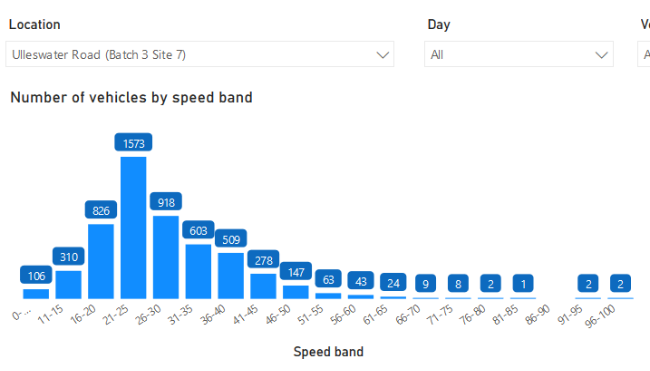

 Examples of data visualised on the dashboard - in this case for the entire week
Examples of data visualised on the dashboard - in this case for the entire week
Detailed traffic speed and volume data collected during the 'planters trial' in the Fox Lane quieter neighbourhood area is now available via an online 'dashboard'. Over a one week period in March just under 260,000 vehicles passed the data collection points - 235825 cars, 18,594 lorries, 1682 bicycles and 351 cars pulling trailers. They included 25 vehicles doing more than 70mph (probably not bicycles), of which 14 were exceeding 80mph and two were recorded at speeds between 96 and 100mph (definitely not bikes).
The dashboard is the work of a PGC reader who lives in the Fox Lane area and is evidently a bit of a whizz kid with spreadsheets and data visualisation tools. It allows users to examine the data for the whole area or individual roads on individual days and at different times of day.
To access the dashboard visit bit.ly/fox-vehicle-data. Use the pull-down menus at the top of the page to focus in on different days, streets etc.
The dashboard is a work in progress - further charts will be added providing new views of the data.
As in the baseline data from late 2018, the heaviest traffic was along Fox Lane, Meadway, the Mall and Amberley Road. To discover which roads had the worst speeding, you'll have to spend some time filtering the data. Perhaps you could let us know what you find using the comments facility?
